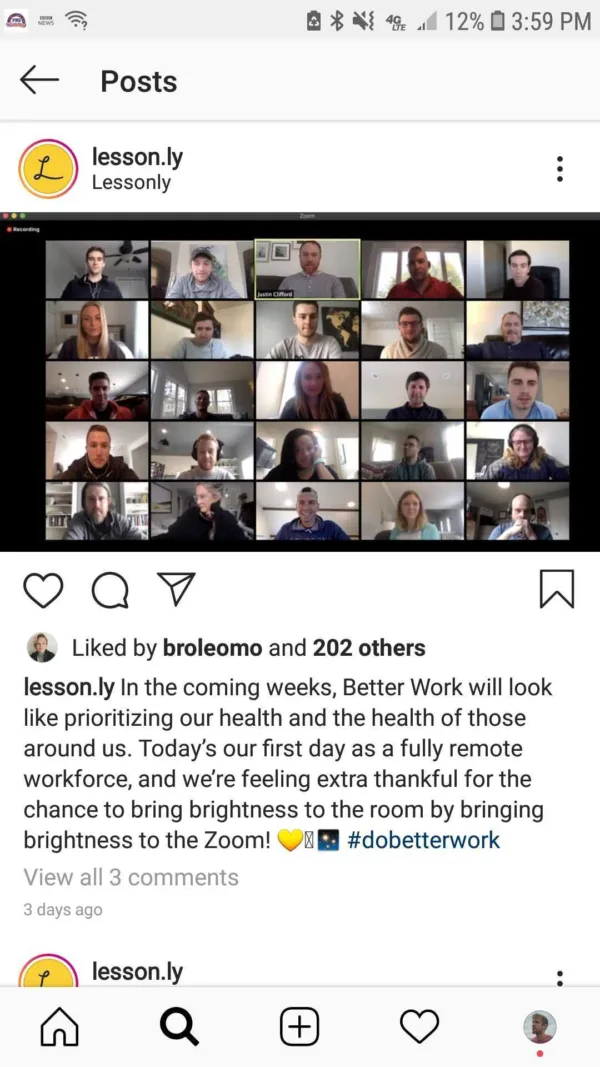
No doubt you’ve checked your inbox recently and seen a constant drip of COVID-19 emails trickling in from every company you’ve ever given your email address to. I’ve seen plenty of appropriate ones and some that are, shall we say, a bit gauche.
Regardless of my personal thoughts on the tone some companies are taking, I have to acknowledge that they’re doing what we’re all trying to do in a time of crisis: make sense of it all. We’re all trying to navigate how we should approach our marketing efforts.
One unfortunate side effect of marketing in this type of crisis is that our customers (and, hey, I’m one of ‘em) can start to see emails, digital ads, and Instagram posts as unnecessary noise. Marketing tactics that used to be the norm can start to feel purposeless or forced, both for marketers and our audiences.
In light of this, I believe we would all do well to remember that there’s a brighter side to marketing and that we all have the power to find a positive niche in this semi-depressing COVID-19 context.
Here are some tips that I believe can bring a bit of light to a bleak time:
Be honest and vulnerable.
No one has all the answers. And that’s ok. Instead of preaching as a “thought leader,” tell your audience what you do know. Some companies that are creating this vulnerable (read that:authentic) content are sharing an inside look into their culture in an honest and empathetic way.

Check out this email example from Noom. They infuse a lot of honesty and vulnerability into this email — no sales pitch included. What you may not see in the screenshot here is some of their well-crafted copy. They say things like this:
"We really hope you can make time amidst everything you’re experiencing to take care of yourself, and give yourself and your fellow humans a little extra love, kindness, and grace."
Right on, Noom. Right on.
Ask for help.
I’d be hard-pressed to find an example of a time when a company asked for help from its customers and got an overwhelmingly negative reaction because of it. Here’s an example from a local coffee shop near our office in Indianapolis, not only following tip #1 (being honest and vulnerable) but also humbly asking its audience to support employees.
"Our biggest fear during this time is that we won’t be able to pay our crew as most of them rely on us as their main source of income. Considering this, we had a group of customers raise $1,100 for our crew in case things get really bad. Please consider contributing to this Customer Financed Support Fund . . . Thanks for staying tuned, and mostly, thanks for your love and support. You are our lifeblood."
Calvin Fletcher's Coffee Company graciously asked for support, but they also ended with a sincere remark to their customers. I, for one, was moved by the message.
Adapt your brand values.
Especially at the breakneck speed of today’s digital marketing environment, when is the last time you referenced your brand values in a creative brief or truly considered how they should influence your content? I’ll be honest and vulnerable: I’m just now thinking about our brand values for the first time this year, and we’re three months into 2020. For all of us in branding or marketing, there has never been a better time to think about your brand’s values and their place in this context.
Take this super simple example from Lessonly. They adapted their brand’s “Better Work” (#dobetterwork) slogan to speak to the COVID-19 crisis.

Their caption says that "Better Work will look like prioritizing our health and the health of those around us." It’s a straightforward caption, yet thoughtful enough to reinforce their brand’s (“extra thankful”) place in the current context.
Sell a feeling, not a product.
On one hand, I’ve seen a few recent marketing efforts that have blatantly used COVID-19 as a way to back into a sale. A one-liner about “needing a little happiness” followed by “ONLY $49.99!” (These types of messages are in the minority, thank the marketing gods.) On the other hand, I’ve read some poignant emails and posts, some that hit you with gut-punching directness and a reminder that we’re all in this together. Here’s a heartfelt tweet from Guinness.

My point is simply that tapping into your audience’s emotions in a positive way can present your company in a much better light. Sometimes, it pays off to highlight our softer sides, not the cold personality of a blunt transaction built on a customer’s fears at a time of panic.
During any crisis, it can seem like we’re entering uncharted territory. But remember this when you’re trying to solve your next marketing challenge: Marketing is — and always has been — contextual. In large part, your success as a marketer hinges on how your company, your brand, and your voice fit into your audience’s context. I, for one, think we should strive to do that in the most positive way possible.
If you have a spare moment, grab some more inspiration from this compilation of tweets called “Brands Leading the Way.”

